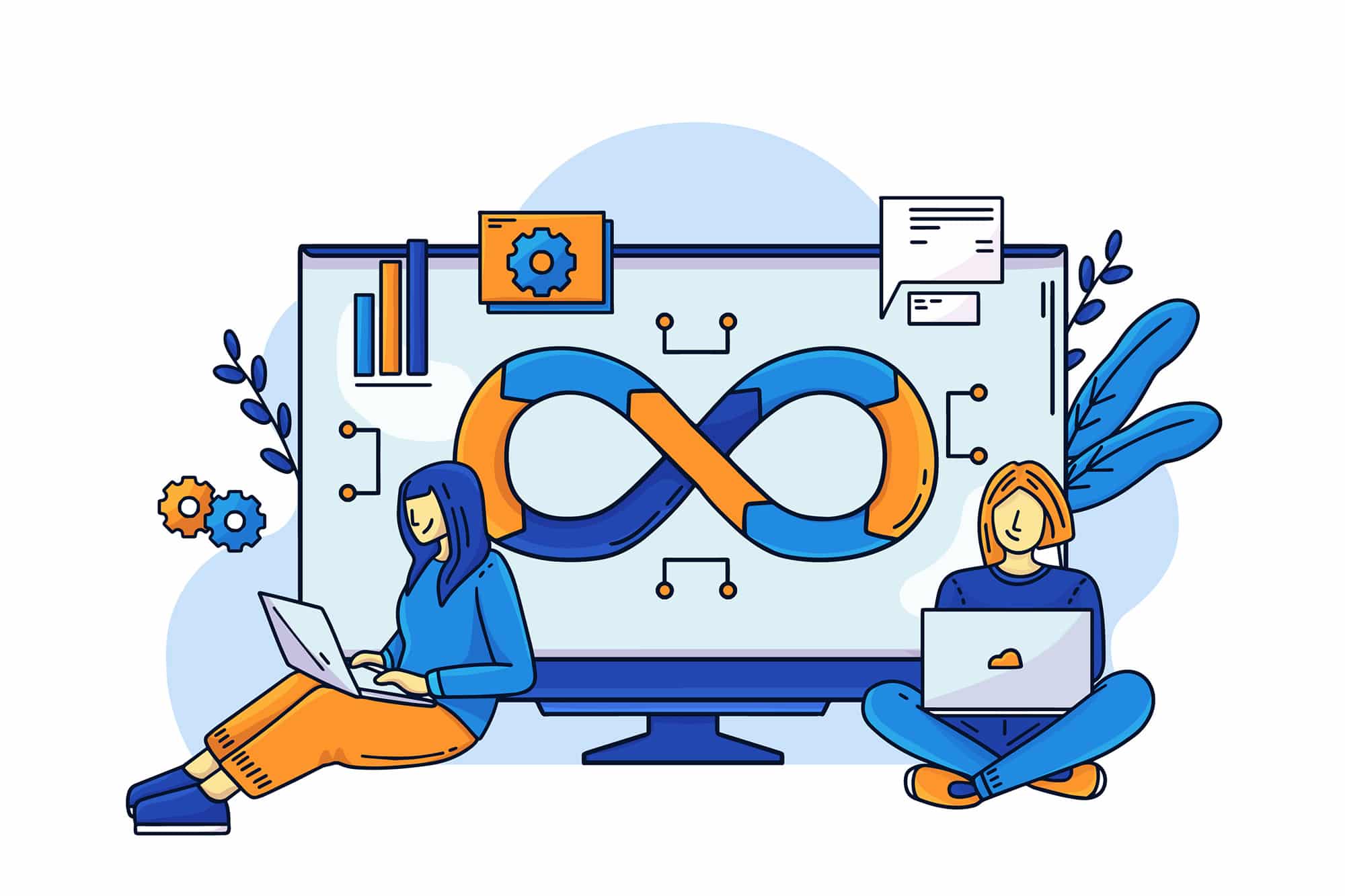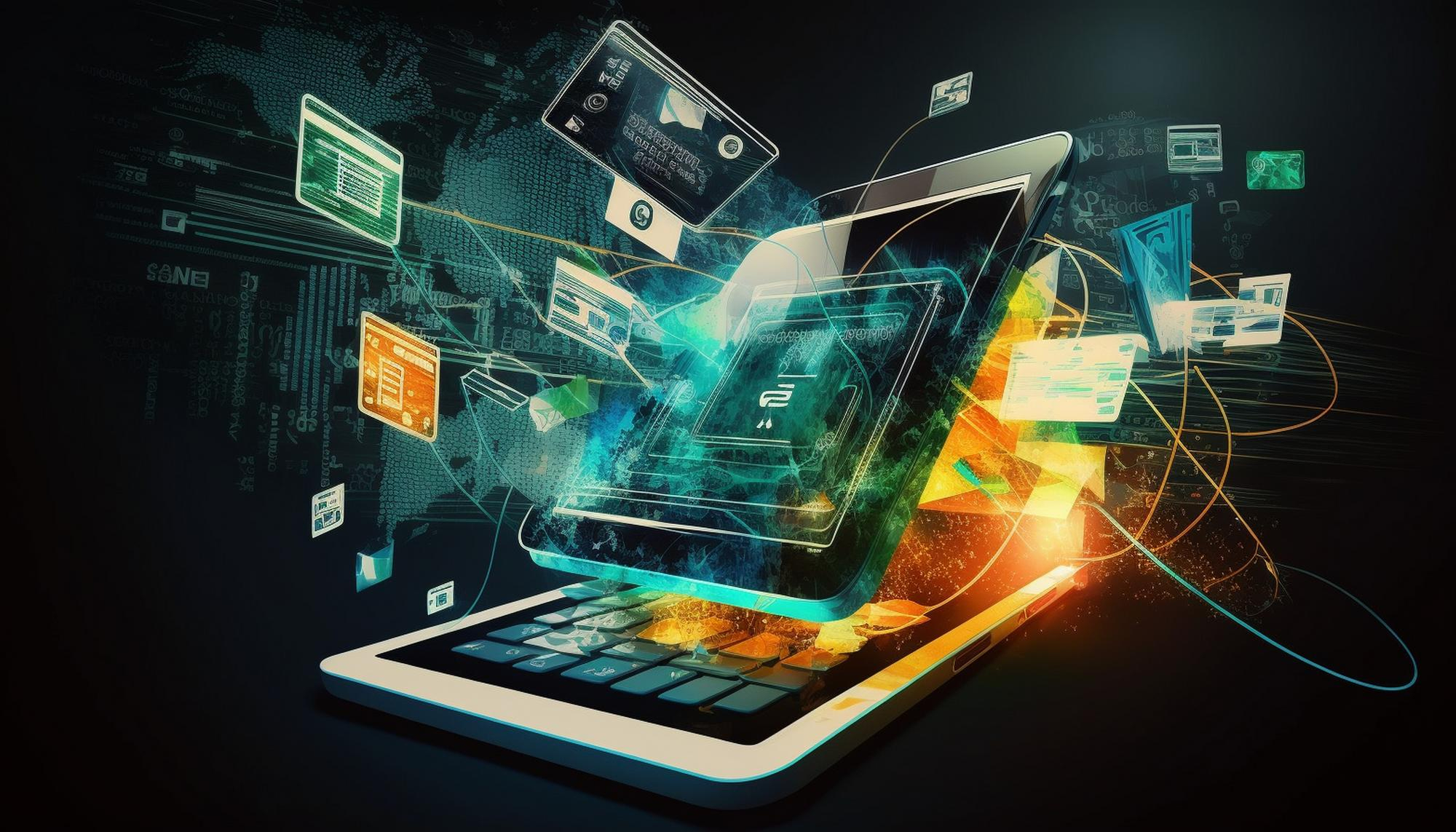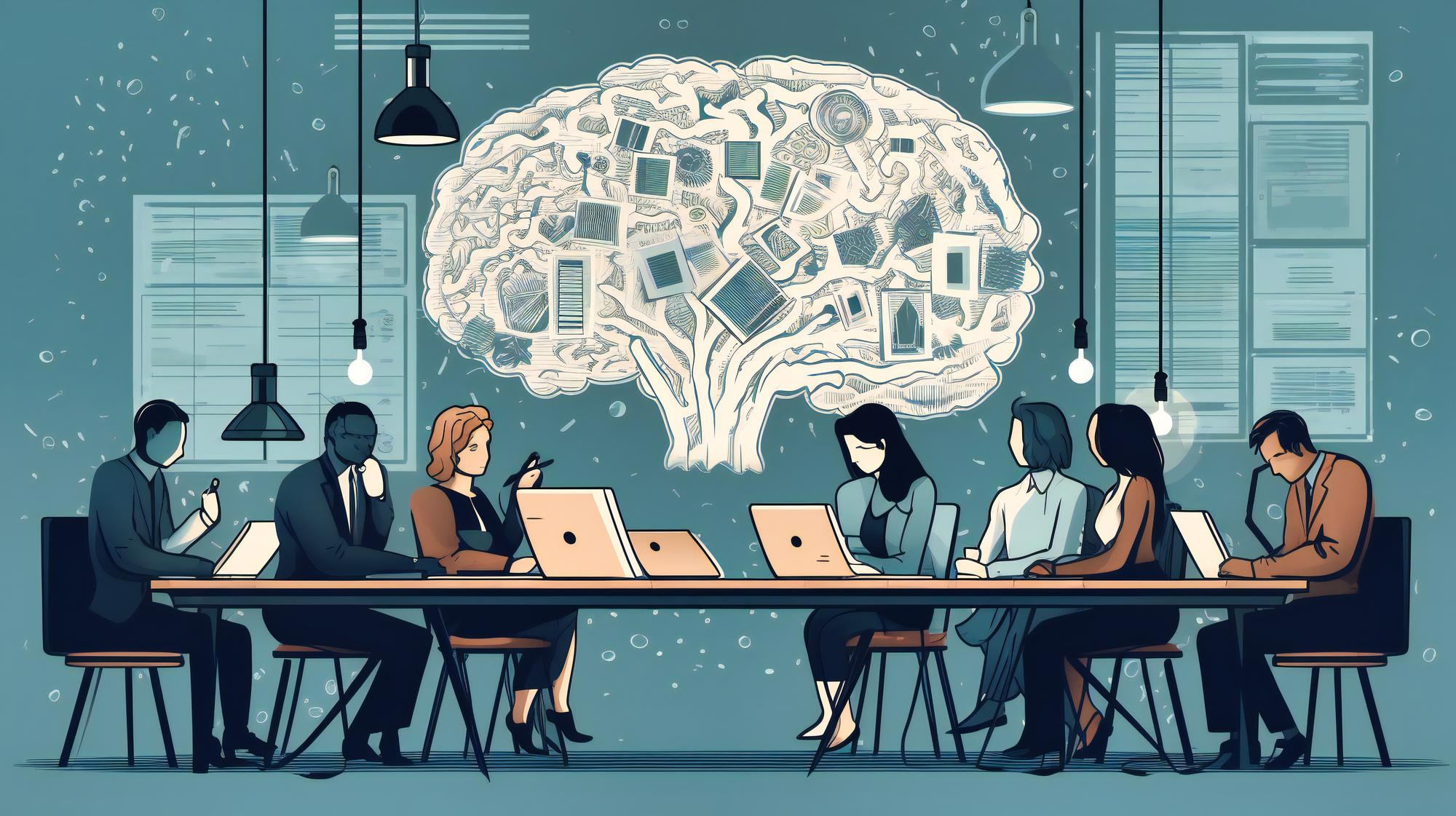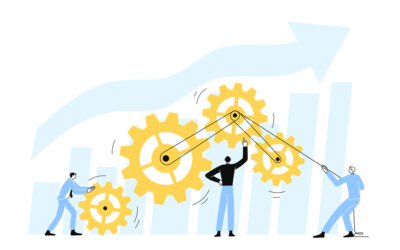Information is at the epicenter of the global economy. Its role in everyday life and work is becoming more important, more volatile, and more quickly commoditized than ever before. Understanding the nature of information in the Digital Age is critical to success.Those who can map the currents and flow of information, stand to better navigate it, and develop an edge over those lost in the noise and chaos.
Many consulting firms offer their insights, models, and frameworks to help organizations wrap their heads around it and guide their digital strategy. But we’ll look at 2 of the top perspectives, Digital Liquidity Model (DLM) and the Infonomics Model (IM) and give our take on which model is ultimately more practical.
Don’t worry this isn’t one of those useless comparative reviews that ends in a tie or a “it depends” conclusion – We hate those time wasters too.

Comparison Criteria: How We’re Measuring
At the end of the day, strategic models need to be useful, so we focused our criteria on what is helpful to business in near and long term and everyday use cases. Here are the primary criteria:
- Accessibility – Can it be understood and leveraged by the individual up through to the largest enterprise?
- Accuracy – Is the model accurate across a majority of use cases?
- Actionable – Does the model give actionable insights and guidance?
- Measurable & Manageable – Can it be measured and better managed as a result of the model?
- Adaptive & Flexible – Is it flexible to apply to all relevant use cases? Is it future proof?
- Scalability & Practicality – Is it applicable in everyday scenarios and does it scale and reverse scale?

Infonomics
What is Infonomics?
Infonomics is the study and translation of information and its role in society through the lens of traditional economics. It frames its study based on looking for similar economic properties of digital assets and then applying traditional economic principles to inform decision making.
It basically states that information is like currency and then seeks to apply classic and traditional economic principles to the field of information management and digital strategy. And though the founder explicitly demonstrates how information in the Digital Age does not behave like a traditional asset, but doesn’t address the acknowledged gaps of how to navigate it, beyond adding responsibilities and titles to existing teams or hiring new specialists altogether.
Infonomics has a strong affiliation with McKinsey, which is a world renowned consultancy that serves some of the largest organizations in the world.

Grading:
Accessibility: A
Trying to understand and measure the value of information through the lens of economic models of yesteryear is not really new. The advantage of this approach is that it takes something most business leaders understand (economics), and staples on digital information and tries to explain everything in familiar concepts. This is a really great way to start the journey for those who are not digital natives.
By trying to frame everything through the lens of centuries old economic models, it makes information in the digital age more approachable but it sacrifices accuracy to a significant degree. Just because you can understand something, doesn’t make it smart or useful. The easier it is to understand the more basic or intuitive it tends to be. This doesn’t bode well if the goal is strategic and competitive advantage.

Accuracy: D
Is the model accurate across a majority of use cases?
If you are a large enterprise and have a lot of resources (and are a potential McKinsey customer), the infonomics model may have something to offer you that you didn’t already know, but I wouldn’t be the farm on forecasts made using the model. It can help offer big generic moves, but doesn’t seem to give accurate enough perspective on managing information to create a strategic or competitive advantage.
Infonomics seeks to help organizations determine their information strategy by quantifying information assets in dollars and utility. It seeks to measure the value of information which is really difficult to do. No one gets an A. However, economics seems to prioritize quantifying things through primarily economic lens before moving on to qualitative assessment of utility. This limits its accuracy. Keep in mind that dollars aren’t the only ways to measure the value of information but they certainly are important. It’s a factor, but Infonomics states that this is difficult to measure and evaluate, but still leans heavily on using it as a metric.
Infomonics doesn’t reverse scale down to the individual level in terms of being able to leverage it, and there are many use cases for smaller businesses, freelancers, solopreneurs that proliferate the business community. This is usually a good predictor in accuracy as the individual is more vulnerable to weaknesses in the strategic model and concerned with the accuracy and applicability. Does the model help the majority of use cases?

Measurable and Manageable: C
Can it be measured and better managed as a result of the model?
Breakdown
Measurable: B-
Manageable: C-
The infonomics model can measure some aspects of information, and can guide you to assessing the value of information and facilitate interesting discussions. What it can measure is information nearest the marketplace.The odd thing about infonomics is it seems to take a lackadaisical approach and assess value based largely on the comparative marketplace, like standing near the auction block and hearing what the going rate is for said information and using it as a baseline. This is not a bad way to think of things, and its certainly a signal to pay attention to as your organization seeks to navigate, but this is nothing new. This is the most obvious and practical choice and organizations do this naturally by default. So there’s not much added value from the model itself.
Further, unlike traditional assets, the entity owning or controlling the information has the ability to influence its perceived and ultimate value. And by primarily looking to market assessments of information, you deprive the organization of many dimensions of strategy to augment information it wishes to sell or lease, as well as to devalue information it seeks to obtain. Putting market constraints on the approach to assessing value is measurable but severely limiting both in measurability and management.
Using the infonomics model greatly devalues internal information to commodity level, as it deprives the organization of dimensions to manage it. What do we mean by manage? Not only to maintain and protect it, but also to think about it, develop and execute a strategy to maximize its utility in alignment with the organization’s goals. If your evaluation of your information assets is merely market rate, it limits your thinking to a traditional and predictable playbook of potential transactions full of well known and well studied moves and countermoves. Also by focusing on the final transaction it neglects manageable dimensions of information and the opportunities therein. Again, limited competitive and strategic advantage.

Actionable: C
Does the model give actionable insights and guidance?
The infonomics model makes it really easy to generate charts and graphs where you just swap out the “currency” for “information”. That’s great if your a consulting firm billing by the hour to spend years telling an enterprise what they already know. So for the consulting industry, Infonomics creates a huge potential money maker. For the consulting clients again the actionable insights are more limited, as the entire premise is based on utilizing a traditional economic playbook.
Now in defense of Infonomics, the creator of the concept created it long ago in the early 2000’s before digital was the mature behemoth it is today. The creator acknowledges that information does not behave like a traditional asset. However, the creator does not bridge the gaps or differences with a framework to bring it altogether.
The core problem presented by the Infonomics model is that treating information like any other economic asset, isis kind of like a trojan horse. You think that thinking about information as an asset is a gift that gives your organization a competitive edge. It sounds great until it gets into your strategic thinking, into application and the problems arise. Once you are aware of the problem, where do you go from there? It is interesting that the concept and model was developed by one of the big consulting firms. This is a thinking trap that requires hours and hours of patches, workarounds, updates, etc., and lots of billable hours for consultants. Essentially, it’s like handing your organization an expensive rubik’s cube. It’s an entertaining notion, that calms worried stakeholders temporarily, and a fine exercise so long as that’s what you signed up for. If however you were hoping to find a map and compass to navigate information in the Digital Age, you may have a bit of buyer’s remorse.

Adaptive & Flexible: D
Is it flexible to apply to all relevant use cases? Is it future proof?
In the age of blockchain, web3, and the evolution of economic concepts themselves, the Infonomics model struggles to keep up, as it is stuck in the past. It doesn’t account for the ever growing omni-dimensions of the omnichannel for information. It can serve large organizations seeking to modernize to a point, but if their competitors adopt the Digital Liquidity Model, watch out.
It’s also important to note – is this model applicable to all relevant use cases? What’s relevant? All business transactions involving the exchange of information are certainly relevant. So this includes the entirety of modern business from the solo acts and consumers to the enterprise. The infonomics model seems to offer more to digital laggards at the enterprise level and offers little no flexibility or adaptability to what is next in the Digital Age.

Scalability & Practicality: D-
Is it applicable in everyday scenarios and does it scale and reverse scale?
Infonomics does not appear to be designed for any other organization other than the Enterprise. It is focused on the Enterprise because that’s where the billable hours and money is at. Go figure.
Bottom Line
Infonomics is an important field because it forces people to attempt to map to existing systems which is a noble effort, especially as it seeks to advocate for discernment in regard to information ownership and the law. Infonomics provides a means of the best practices throughout the ages and brings generational wisdom to the conversation, and this is critical. Infonomics however is rooted in outdated economic concepts, and knowingly does its best to apply patches. It can’t keep up with the Digital Age as the dynamics of information are multidimensional as are the factors that determine its value are exponentially greater than historic economic concepts allow. But these criticisms are only relevant if there is a better way to approach information in the Digital Age.
So is there a better approach? Enter the Digital Liquidity Model (DLM)

The Digital Liquidity Model
What is Digital Liquidity?
The Digital Liquidity Model (DLM) is focused on the study of flow and value of information in the Digital Age. It involves a multidisciplinary approach focused on how information travels across wires, airwaves, screens, social structures, the brain, markets, economies, you name it. The Digital Liquidity Model (DLM) measures how the value of information shifts based on form and fluidity among other factors, and seeks to determine the key factors that influence it.
The Digital Liquidity Model (DLM) evaluates information based on flow, and publicly discloses 6 factors that influence the flow thereby affecting its value. Those factors are gauges but described in traditional affirmations:
- Speed (fast and slow)
- Simplicity (how simple or complex things are)
- Independence (where are the dependencies)
- Mobility (can it move and to what degree?)
- Tactility (can you touch it or feel that you’re touching it?)
- Control (do you really control or own it?)
6 KEY Factors Of digital Liquidity
What are some of the factors of Digital Liquidity Model (DLM)? What affects the flow and value of information? Here are 6.
Speed
Simplicity
Independence
Control
Mobility
Tactility
dlm Application Areas
What are some of the areas of application? Here are a few.
Business
Spaces
People
Technology & Innovation
Markets
Policy & Governance
But does it measure up to the Infonomics Model? Let’s find out. To the scores!
Accessibility: A
Can it be understood and leveraged by the individual up through to the largest enterprise?
The Digital Liquidity Model (DLM) is as simple or as complex as you need it to be. The core principles have been taught to children as young as 12, giving them a leg up when navigating their personal digital liquidity. The DLM was designed to serve everyone especially the individual and scales from there easily. Just because something is easy to grasp doesn’t mean that it gives an edge right? Not in all cases, as many know, even common sense is not commonly practiced.

Accuracy: A-
Is the model accurate across a majority of use cases?
The Digital Liquidity Model (DLM) is entirely new and more complex than previous methods and frameworks. Individuals and organizations can determine their own proprietary algorithm to assess their desired states of the 6 principle factors of Digital Liquidity. The DLM is standardized via principles for certain use cases, but preserves its adaptability and flexibility leaving the controls in the hands of the user to cater to their particular needs and transactions.
There is no universal standard for digital liquidity as the very nature of information is subjective. There have been past attempts, but they all resulted in biased models poised for corruption by those that control it.So it is left subjective by design to preserve the individual user’s ability to utilize it to their advantage.
Side Note: The ESG (Environmental, Social, Governance) movement is a perfect example of the perils of prescribing a universal model. ESG takes the subjective, with a particular social-political bias, contested data models, pseudo-science, and questionable, hypocritical moral principles, and attempts to quantify it into a universal, mathematical model for moral behavior. ESG is a religion masquerading as a analytical or science based framework. The slightest analysis reveals it is not a neutral framework in every participant’s best interest.
Heroik did not want the Digital Liquidity Model to take a similar dark path, and in terms of policy and governance champions individuals right to view digital liquidity for their own needs and uses, erring on the side of individual’s right to life, liberty and pursuit of happiness. This may sound odd, but Digital Liquidity was not only framed around how to wrestle with information in the digital age for use cases, but it also answers the question, what is the fundamental expression of freedom in the digital age. Ensuring individual applicability preserves accuracy and usefulness for the widest amount of use cases and people. Other models are like ESG, fundamentally dishonest religious and political perspectives wrapped in things that sound like science but aren’t

Actionable: A
Does the model give actionable insights and guidance?
The principles of Digital Liquidity have been taught in presentations, summits and workshops for individuals and organizations large and small, and immediately applied to near term problems. Where infonomics leaves everything to the macro, the Digital Liquidity Model can be immediately applied to helping organizations and individuals analyze their current state, set their desired state (vision, goal setting), and analyze the gaps in between.

Measurable & Manageable: A
Can it be measured and better managed as a result of the model?
Yes. Various iterations and metrics for the Digital Liquidity Model can be adopted by groups or organizations and utilized to set benchmarks and measure performance through the 6 primary principles of digital liquidity or their kin. By using the principles, users are designing and analyzing things through various dimensions that affect the value of information at an experiential level.

Adaptive & Flexible: A
Is it flexible to apply to all relevant use cases? Is it future proof?
The Digital Liquidity Model is adaptive and flexible and future proof for the road ahead. It isn’t held back or anchored in old models, but can still apply the best of what the historic models bring to the table.

Scalability & Practicality: A
Is it applicable in everyday scenarios and does it scale and reverse scale?
The Digital Liquidity model can be taught to children, consumers, and the general public, as well as businesses of all sizes. It can be managed and utilized by a single individual and does not require a small army of specialists to apply and leverage. It scales up and down

Conclusion
Many of the models out there seeking to wrestle with information in the Digital Age, seem to amount to pseudo-intellectual honeypots and mind traps used to lure organizations into expensive engagements where little value is provided. They don’t fall apart until after the purchase and unboxing. The Digital Liquidity Model can be validated early on in simple engagements and earn its access to larger projects.

| Infonomics Model (IM) | Digital Liquidity Model (DLM) | |
|
Accessibility Can it be understood and leveraged by the individual up through to the largest enterprise? |
A |
A |
|
Accuracy Is the model accurate across a majority of use cases? |
D |
A- |
|
Actionable Does the model give actionable insights and guidance? |
C |
A |
| Measurable & Manageable – Can it be measured and better managed as a result of the model? |
C |
A |
|
Adaptive & Flexible Is it flexible to apply to all relevant use cases? Is it future proof? |
D |
A |
|
Scalability & Practicality Is it applicable in everyday scenarios and does it scale and reverse scale? |
D- |
A |
Winner: The Digital Liquidity Model (DLM)

Why – Digging Deeper
As a refresher, in comparison, Infonomics is the study and translation of information and its role in society through the lens of traditional economics. In the late 1990’s, Heroik took a similar approach, but found forcing the comparison was like making a movie about animals in a small zoo and calling it a “Nature Documentary”. Animals in cages don’t behave naturally as they do in the wild. This is the same problem with infonomics.The lens of infonomics places too many unnatural constraints on information for it to be useful in the wild. Though it provides a comforting and familiar framework to view information, it doesn’t capture its nature very well.
The Digital Liquidity Model takes a different approach to information assets and the digital world and treats it as unique and different.
Information in the digital age is like a dragon. And many try to describe it as just a lizard. Why? Because lizards are something they can understand. Nevermind that this “lizard” has wings, can fly and breathe fire. Imagine making plans to handle a dragon when you only studied lizards? This is the problem with thinking about information in terms of economics.
In order to really develop functional strategies and methods for the information age, you have to first acknowledge that you’re looking at a dragon in the first place. It is its own beast and topic. It is not a derivative of past disciplines. It is indeed the creature of a new age and new paradigm.
Infonomics tries to scoop up information like water and define its shape and thereby declare the way it “works” and is best used. Nevermind that the shape is always the shape of the container they use; that doesn’t play out well in the real world.
Information is fluid, and you want to understand it to maximize its use, which is almost always in motion. This project is focused on the study of flow and value of information in the Digital Age in its native habitat; in motion.
Unlike other strictly academic approaches, Heroik takes a more holistic and pragmatic approach to information in the digital age. We recognize the soft and hard sciences that influence and affect the flow and value of information and economics. You can’t ignore the technology, the sociology, the psychology, the economics, physics, or neuroscience involved. You must be ready to bear it all as you seek to navigate the field and that’s how we go at it.






